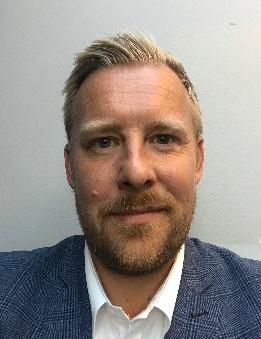In an Interview, Johan Applegren, Manager Cost & Revenue Center at Tribe Hotels AS shared his insights about finding a new PMS platform for First Hotels and why they selected StayNTouch®
As head of a newly established center with a focus on revenue management, analysis, business development and cost efficiency at all Tribe owned hotels (First Hotels) in Scandinavia, Johan’s responsibilities include:
- Following up revenue managers for all our hotels in Scandinavia
- Strategies for optimizing revenue and results
- Analysis of hotel performance and results
- Total profit management

In an interview, he shared his insights about his role in finding a new PMS platform for First Hotels.
What is important to you related to technology platforms?
We focus on technologies that are simple in nature. They must be easy to learn and easy to implement but also be able to fulfill all our requirements. The company has high turnover as do most hotels companies and thus the system needs the capability to train new employees easily. We also want to limit the number of systems required, and finally, it needs to be future-minded, e.g., mobile check-in/check-out door lock integration and whatever next is going to come down the road.
Do you think today’s technology hotel companies develop what is the next shiny object or do they develop based on the true market requirements of our industry?
We have been doing a complete revamp of our entire infrastructure, and I have met many start-ups during this process. I believe that a number of them develop their solutions based on what is “neat” and I have a feeling that they do not always know the demands on a hotel and it operations. Our industry is littered with legacy systems, so it may be a little easier for startups to pitch the future than it would be in other industries.
Do you see ancillary spend becoming a large part of how hotels drive revenues?
All of it depends on what type of properties you have. People talk about total revenue management, and it is essential to look at all revenue streams when trying to optimize all aspects of your sales. I also believe it is important to look at the true Net RevPar. Too few hotels do this. We, at times, do not know the true profitability of a room. We also need to understand the total cost of distribution, and when you understand this, you can implement a very profitable channel strategy.
When you looked at property management systems, what were the features that they had to have, to make your short list?
They have to have a mobile check-in, they must be cloud-based, and they needed to be intuitive, to learn quickly. The user interface was very important for us. It has to be with how we teach our employees but also how quickly they can take the information and repurpose this for our guests. The new PMS needed to be able to connect to our other systems such as our loyalty solution, channel management platform, our CRS, etc. We then limited it down to two platforms. We do not want to change how we think, how we work to replace a PMS. Don’t get me wrong, we are flexible, but we didn’t want to re-invent the wheel. This is where StayNTouch did a great job. They understood our previous platform and were able to deliver a similar workflow process that wasn’t intrusive.
What level of due diligence did you do in regards to the service and support of the new solution?
Well, we didn’t want to be a small fish in a big pond like we were with our previous provider. We wanted to be able to work alongside a partner rather than a vendor and feel as if our input was going to be heard. The ongoing support is very important to us. When it comes to development, we are very interested in working with a company that will listen to our new requirements and do their utmost to implement new features when required.
Where do you see the future of hotel technology?
Consolidation is key, so you don’t have to require a hundred systems. I understand that we will always need different systems however we would like to be able to reduce the total number of partners. The tech space is evolving and changing at a rapid pace, so we need to find out what to we truly need versus what we wish we had. Technology prioritization should be seen as an imperative when making buy decisions. Finally, gaining information from multiple systems and using that data effectively to affect change hopefully will be a big area of technological improvement.

